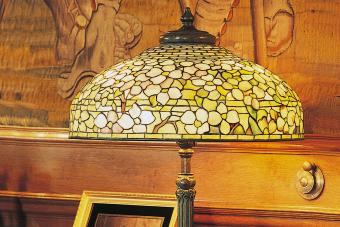
One of the greatest additions to any country home is a vintage Mirro teapot. Read on to learn about the history of this aluminum craft company, and why the Mirro teapot is such a unique item.
A Review of the Vintage Mirro Teapot
Any time you visit an antique auction, you may discover a great variety of kitchen cookware by various manufacturers, dating all the way back to the cast iron relics of the 1800's and before. Toward the latter part of that century, aluminum became an inexpensive metal with properties that made it ideal for cooking as well as many other purposes. This technological breakthrough led to the creation of a number of companies, like Mirro, which specialized in aluminum products.
The Discovery of Aluminum
Since aluminum is a natural metal, it was never invented - it was simply discovered. The invention that led to its use in mass manufacturing was a process to extract the metal in an inexpensive way. Throughout the mid 1800's various chemists discovered ways to produce first small, and then larger amounts of aluminum. From these accomplishments, scientists started to determine the properties of this fascinating metal. The simpler the chemical production process became, the cheaper the metal itself became. Finally, on April 2, 1889, a young chemist by the name of Charles Martin Hall, established a way to produce aluminum inexpensively, and then patented the idea (patent #400,666).
The History of Mirro
Joseph Koenig founded the Mirro Aluminum Manufacturing Company at a small warehouse in Two Rivers, Wisconsin. During the First World War, this company, as well as other aluminum manufacturers in the nation, pumped out many thousands of canteens, mess kits and other items for military use. The company produced the same sort of military products during World War II, but its production expanded to include airplane fuel tanks and landing gear.
The commercial side of the Mirro Aluminum Company really started to take shape in the 1950's, when it quickly became recognized as one of the leading manufacturers of cookware, toys, and other products made from this metal. After transitioning through a number of buyouts and mergers with other companies, Mirro is now considered one of the largest manufacturers of aluminum cookware in the world.
Finding Mirro Teapots

You can find vintage Mirro teapots and other aluminum products at almost any antique auction or estate sale that you visit. They are easy to recognize from the angular design of the handles and the thick, high quality aluminum stock that the cookware is made of. The older teapots have wooden handles on the top of the lid and the side of the pot, typically painted in black.
Mirro Enamelware
Although the older Mirro teapots make great decor for simple and rustic kitchens, more collectors seek out the enamelware that Mirro manufactured in the latter part of the 1950's and throughout the 1960's. You are likely to find one of these 1950's enamelware teapots on the top of your grandmother's stove, with a flip-top spout cover and a signature angular handle on the top. These teapots came in a variety of enamel colors, with the enamel covering the outside of the aluminum body. Cookware collectors are more interested in the enamelware Mirro teapots rather than the older, more rustic ones. This is largely due to the fact that vintage enamelware is highly collectible, regardless of manufacturer.
Final Words
Regardless of the type of aluminum ware that you collect, the odds are that Mirro produced it. After over 100 years manufacturing aluminum products for homes and businesses across the country, you'll be hard pressed not to find a Mirro product at the auction houses and on the shelves of the antique dealers around the country.
For additional information about antique teapots, read the following LoveToKnow articles:
- Brown Betty Teapot
- Meissen Teapot
- Teapot Slideshow
- Unique Teapots







